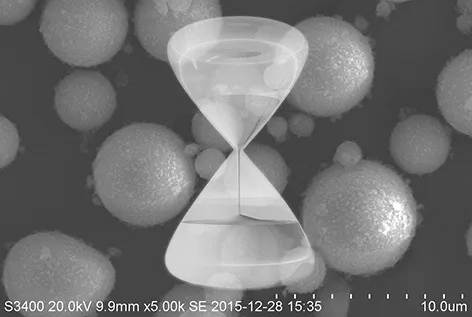Silicon micropowder is made from natural quartz (SiO2) or fused quartz (amorphous SiO2 after natural quartz is melted at high temperature and cooled) through multiple processes such as crushing, ball mill (or vibration, air jet mill), flotation, acid washing and purification, and high-purity water treatment.
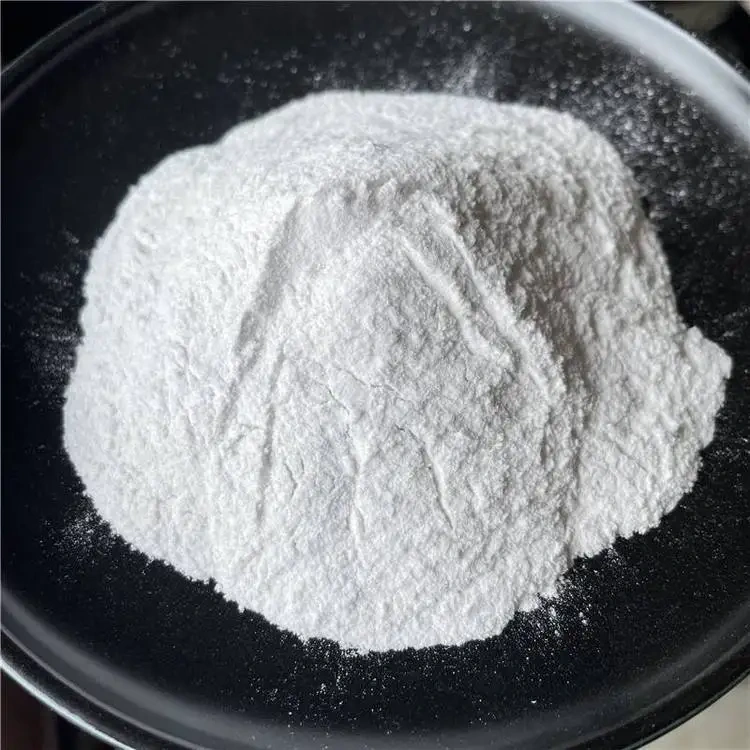
Performance of Silica Powder
In addition to its excellent properties such as low thermal expansion coefficient, excellent dielectric properties, high thermal conductivity, and good suspension performance, silicon micropowder also has the following properties:
- Good Insulation Properties: Due to the high purity and low impurity content of silicon micropowder, its performance is stable, offering excellent electrical insulation and arc resistance. This ensures the cured product has good insulation properties.
- Reduces Epoxy Resin Exothermic Peak Temperature: Silicon micropowder lowers the peak exothermic temperature of the curing reaction, reducing the linear expansion coefficient and shrinkage rate of the cured product, thereby eliminating internal stress and preventing cracking.
- Corrosion Resistance: Silicon micropowder is less likely to react with other substances. It is chemically inert with most acids and bases, and its uniformly distributed particles on surfaces provide strong corrosion resistance.
- Well-graded Particles: The particles are well-distributed, reducing and eliminating precipitation and stratification. This enhances the tensile and compressive strength, wear resistance, and increases the thermal conductivity and flame retardancy of the cured product.
- Silane-Coupling Agent Treated: Silicon micropowder treated with silane coupling agents has excellent wettability with various resins, good adsorption properties, and mixes easily without clumping.
- Cost Reduction and Performance Enhancement: When used as a filler in organic resins, silicon micropowder not only improves the properties of the cured product but also reduces production costs.
Classification of Silica Powder
Silicon micropowder, produced by different manufacturing processes, varies in quality. It can be classified into four types: fused silica micropowder, crystalline silica micropowder, active silica micropowder, and quartz silica micropowder.
From the morphological perspective, it can be divided into angular and spherical silica micropowder.
High-tech silicon micropowder includes ultrafine, spherical, and high-purity silica micropowder.
Silicon micropowder used in integrated circuit copper-clad boards can be divided into five types: crystalline silica micropowder, fused (amorphous) silica micropowder, spherical silica micropowder, composite silica micropowder, and active silica micropowder.
Application of Silica Powder
Coating

In the coatings industry, silicon micropowder’s particle size, whiteness, hardness, suspension, dispersion, low oil absorption, and high resistivity improve corrosion resistance, wear resistance, insulation, and high-temperature performance. Silicon micropowder used in coatings plays an important role as a filler due to its excellent stability. For exterior wall coatings, SiO2 materials are crucial for weather resistance.
plastic
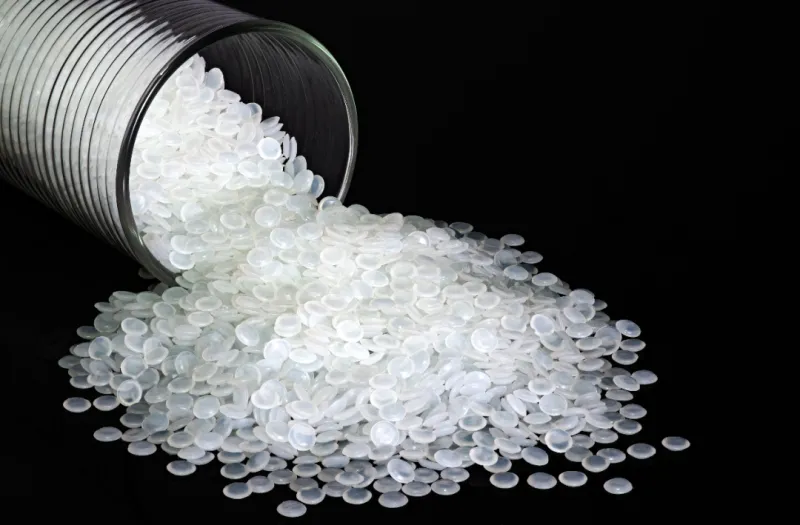
Silicon micropowder can be used in products like PVC flooring, polyethylene, polypropylene films, and electrical insulation materials.
PVC floor tiles filled with silicon micropowder enhance wear resistance. When 320 mesh quartz powder is used at a filling amount of 160–180 parts, the floor meets the GB4085-83 standard, with good surface smoothness and scratch resistance.
In PVC acid-resistant pipes, filling 400 mesh quartz powder at 10%–15% improves viscosity, fluidity, and processing performance, making extrusion and molding easier. The acid resistance of the finished product is significantly improved.
Silicon micropowder with a large specific surface area (over 600 mesh) and high activity enhances the physical, chemical, and optical properties of polyethylene (PE) agricultural films. Filling polypropylene improves the mechanical properties of the product.
Electrical and Electronics

Electrical grade silicon micropowder is mainly used in insulation casting for ordinary electrical components, high-voltage electrical insulation, APG process injection materials, epoxy encapsulants, and high-quality ceramic glazes. Electronic grade silicon micropowder is primarily used in plastic encapsulation materials and packaging materials for integrated circuits and electronic components.
Deep processing of silicon powder
The quartz sand after flotation—ultrafine grinding (dry grinding or wet grinding)—combined process washing—high-gradient magnetic separation—electrostatic separation—deionized water washing—classifying.
Ultrafine Grinding (Dry or Wet Grinding): This process involves grinding quartz sand to ultrafine silicon micropowder with a particle size of 325-4000 mesh, either with or without water.
Classification: Under the action of a hydrocyclone, ultrafine silicon micropowder (325-4000 mesh) is classified into standard ranges such as 325-400 mesh, 400-500 mesh, etc.
Co-Process Washing: Different grades of ultrafine silicon micropowder are placed in a temperature-controlled reaction vessel at different layers. A certain amount of oxalic acid or citric acid and a small amount of auxiliary agents are added. The reaction is carried out at 70°C–100°C for 2-8 hours. After the reaction, harmful trace metal and non-metal impurities are removed.
High-gradient Magnetic Separation: This process uses magnetic separation equipment with a magnetic strength of 50-15000 Gauss to remove trace iron impurities from the ultrafine silicon micropowder.
Electrostatic Separation: The aim is to remove trace harmful impurities present in the ultrafine silicon micropowder.
Deionized Water Washing: After co-process washing, the chemical agents and harmful trace impurities left on the surface of the silicon micropowder are removed in a clean room using deionized water.
Special Drying: After washing with deionized water, the ultrafine silicon micropowder is placed in a special drying machine in a clean room to dry. This process produces high-purity ultrafine silicon micropowder of different grades (325-4000 mesh) with a moisture content of 0.003-0.01%.
Vacuum Packaging: The various grades of ultrafine silicon micropowder are vacuum-packaged separately to avoid contamination by air.
Surface modification of silica powder
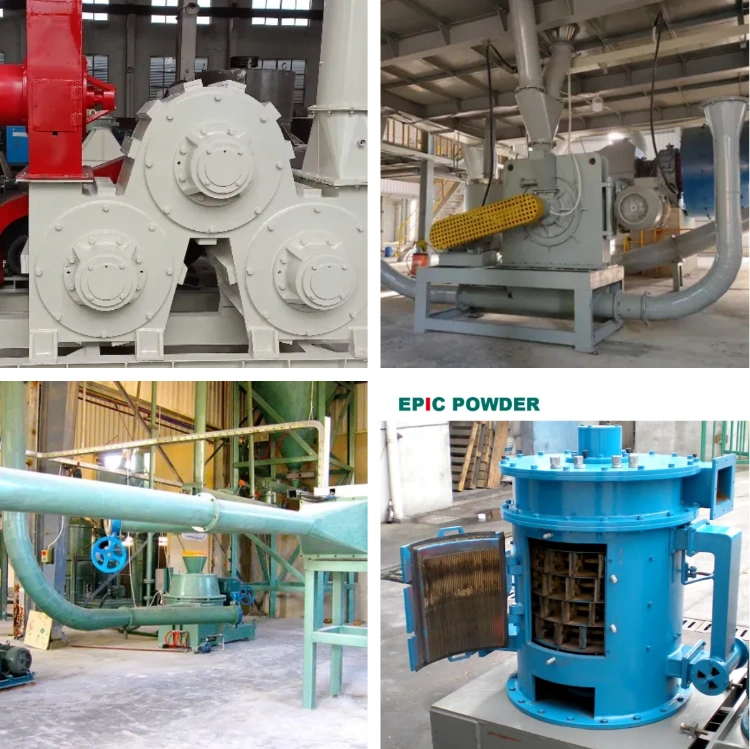
Due to the poor compatibility between non-metallic mineral fillers and polymer matrix, they are difficult to disperse evenly. Direct filling often leads to a decline in certain mechanical properties of the material. For functional inorganic non-metallic mineral fillers, besides particle size and distribution, good compatibility with the polymer matrix is necessary. Filling not only reduces costs but also enhances the mechanical properties and overall performance of the material. Therefore, surface modification of non-metallic mineral fillers is essential.
Silicon micropowder surface modification mainly uses silane coupling agents with the general formula R—SiX3. R represents an organic hydrophobic group, such as vinyl, epoxy, amino, methacrylate, or sulfate groups. X represents hydrolyzable alkoxy groups, such as methoxy, ethoxy, or chlorine. Main factors influencing the modification effect include silane type, dosage, application method, treatment time, temperature, and pH.
Silicon powder processing equipment
Angular Silica Powder Production
Angular silicon powder is a silicon powder with irregular and angular shapes obtained by grinding silicon powder raw materials.
The main production equipment for angular silicon micro powder includes ball mills, vibration mills, micro powder classifiers, and dryers

Ball Mill: It can be used for dry or wet grinding. When the ball mill operates, the grinding media and material are lifted to a certain height and then fall. This process is repeated, causing material to be impacted and ground between the grinding media and the mill wall.
Vibration Mill: This mill uses the vibration of grinding media to slide and roll inside the mill chamber, grinding the material.
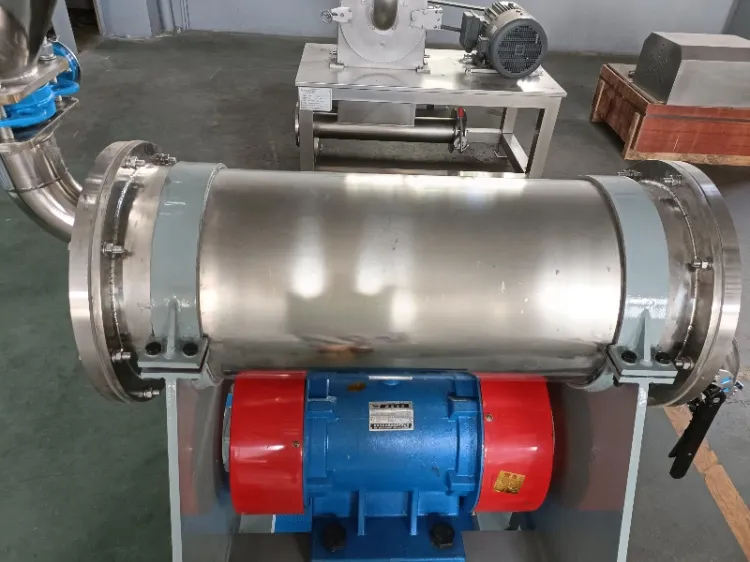
Air Classifier: Materials are drawn into the classification chamber by a fan. They are classified between high-speed rotating rotor and classifier blades. Coarse materials exit through the bottom outlet, while fine powders exit through the top outlet.

Dryer: To ensure the extremely low moisture content of silicon micro powder and prevent contamination during drying, a hollow shaft stirring dryer is used. Materials enter through the feed inlet and are transported by hollow paddles to the discharge outlet. The material is stirred by the paddles and heated by the jacket to evaporate moisture and dry the material.
Angular Silica Powder Process
Dry Grinding Process: Silicon micro powder raw materials are placed in a ball mill or vibration mill. The grinding can be continuous or batch-wise. Coarse materials return to the mill for further grinding. A air classifier controls the particle size. The moisture content must be controlled in the input material. The product does not require further drying after milling.
Wet Grinding Process: Raw materials are added to the ball mill with water. The slurry concentration is 65%-80%. After several hours, the slurry is discharged and dewatered by filtration or settling. The wet cake is broken, dispersed, and fed into a hollow shaft drying machine. The drying process produces the final product.
Grinding media with specific diameters are added to the mill. The media’s diameter and ratio depend on the feed size. The grinding time varies based on particle size requirements. Grinding media must be non-metallic, like alumina or silica. The mill barrel is lined with wear-resistant materials such as alumina ceramic, silica, or polyurethane rubber.
conclusion
silicon micropowder boasts a range of exceptional properties, including high purity, excellent insulation, and enhanced mechanical strength. Its versatile applications span across various industries, such as electronics, coatings, plastics, and pharmaceuticals. Through advanced processing techniques like surface modification and particle size control, the functionality of silicon micropowder can be tailored to meet specific industry needs, further expanding its potential in high-performance materials and products. As technology continues to evolve, silicon micropowder is set to play an increasingly significant role in numerous cutting-edge applications.
epic powder
Epic Powder, 20+ years of work experience in the ultrafine powder industry. Actively promote the future development of ultra-fine powder, focusing on crushing,grinding,classifying and modification process of ultra-fine powder. Contact us for a free consultation and customized solutions! Our expert team is dedicated to providing high-quality products and services to maximize the value of your powder processing. Epic Powder—Your Trusted Powder Processing Expert !
